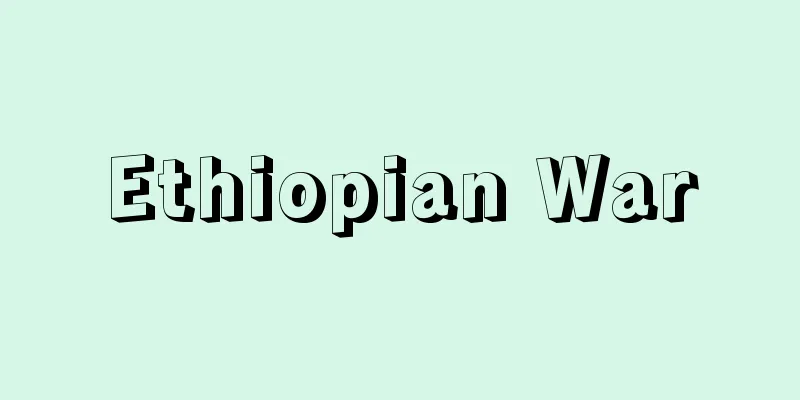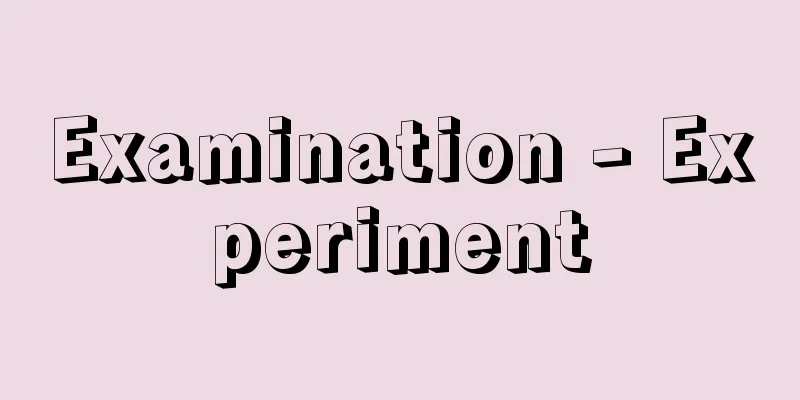Ethiopian War

|
The Italian invasion of Ethiopia took place twice, once in the late 19th century and once in the 1930s. FirstItaly, which had fallen behind in the race to divide Africa among the imperialist powers at the end of the 19th century, took an interest in Ethiopia, the only independent country in eastern Africa, and supported Menelik II during the internal conflict in Ethiopia in 1889, enabling him to become emperor, and planned to make Ethiopia a protectorate through the Uchalli Agreement of the same year. However, when Menelik II abrogated the Uchalli Agreement with the support of France in 1893, Italy sent troops and began an invasion. However, the Italian army was defeated at Adwa in 1896, which thwarted Italy's invasion plans, and Ethiopia's sovereignty was secured through the Addis Ababa Agreement of the same year. [Shunichi Fujimura] SecondItaly, whose territorial ambitions had not been satisfied under the Versailles system after World War I, once again chose resource-rich Ethiopia as its target for invasion. In December 1934, a clash occurred between the armies of both countries in the town of Warwar, which borders Italian Somaliland, and Italy tried to use this as an opportunity for a full-scale invasion. Ethiopia immediately appealed to the League of Nations and sought arbitration based on the 1928 arbitration treaty between the two countries, but the arbitration was not easily granted. Meanwhile, France had given tacit approval to Italy's invasion of Ethiopia through the Laval-Mussolini Agreement in January 1935, and Germany's announcement of rearmament in March of the same year had focused the attention of the great powers on Europe. Furthermore, in August of the same year, the United States enacted a neutrality act, showing its stance of staying out of the conflict. Given this situation, Italy decided that this was an opportunity to invade Ethiopia, and in October, without a declaration of war, it sent in about 800,000 troops and began the invasion. The League of Nations finally passed its first resolution for sanctions based on Article 16 of the Covenant, but the sanctions were limited to economic matters and did not include an embargo on oil, which Italy considered essential for the war. Britain also did not prohibit Italian ships from passing through the Suez Canal, and in December of the same year, Foreign Ministers Hoare and Laval announced a plan to end the war by making Ethiopia an Italian protectorate, making the great powers' appeasement of Italy clear. Italy struggled with fierce resistance from the Ethiopian army and fighting on the highlands, but it was finally able to overpower the Ethiopian army by using illegal poison gas and introducing a large amount of modern weapons. Emperor Haile Selassie went into exile on May 2, 1936, the capital Addis Ababa fell on the 5th, and Italy declared the annexation of Ethiopia on the 9th, bringing the curtain down on the Ethiopian War. [Shunichi Fujimura] Source: Shogakukan Encyclopedia Nipponica About Encyclopedia Nipponica Information | Legend |
|
エチオピア支配を目ざしたイタリアの侵略戦争。19世紀末および1930年代の二度にわたって行われた。 第一次19世紀末の帝国主義列強のアフリカ分割競争に立ち後れたイタリアは、アフリカ東部唯一の独立国エチオピアに関心をもち、1889年同国の内紛に際しメネリク2世を支援して皇帝即位を実現させるとともに、同年のウッチャリ協定によってエチオピアの保護領化を計画していた。ところが93年メネリク2世がフランスの支持を得てウッチャリ協定を破棄すると、イタリアは軍隊を派遣し、侵略を開始した。しかし、96年アドワでイタリア軍が大敗、これによりイタリアの侵略計画は挫折(ざせつ)し、同年のアディス・アベバ協定でエチオピアの主権は確保された。 [藤村瞬一] 第二次第一次世界大戦後のベルサイユ体制において領土的野心を充足されなかったイタリアは、豊かな資源に恵まれたエチオピアを再度、侵略目標に選んだ。1934年12月、イタリア領ソマリランドと国境を接するワルワルの町で両国の軍隊の衝突事件があり、イタリアはこれを本格的な侵略の契機にしようとした。エチオピアはただちに国際連盟に提訴するとともに、28年の両国仲裁条約に基づき仲裁を求めたが、仲裁は容易に成立しなかった。この間、フランスは35年1月、ラバル‐ムッソリーニ協定によってイタリアのエチオピア侵略に暗黙の了解を与えており、また、同年3月のドイツの再軍備宣言によって、列強の関心はヨーロッパに集中していた。さらに同年8月、アメリカは中立法を制定して紛争の局外にたつ態度を示した。こうした情勢からイタリアは、エチオピア侵略の好機と判断し、10月、宣戦布告もなく約80万の兵力を投入、侵略を開始した。国際連盟はようやく規約第16条に基づく初の制裁を決議したが、制裁の内容は経済面に限定され、イタリアが戦争に不可欠とする石油の禁輸は除外するという緩慢なものであった。また、イギリスもイタリア艦船のスエズ運河通過を禁止せず、とくに英仏は同年12月ホーア、ラバル両外相の間でエチオピアをイタリアの保護国とする戦争の終結案を発表するなど、大国の対イタリア宥和(ゆうわ)策は明瞭(めいりょう)であった。イタリアはエチオピア軍の激しい抵抗と高地での戦闘に苦しんだが、違法な毒ガスの使用と近代兵器の大量投入によってようやくエチオピア軍を圧し、36年5月2日、皇帝ハイレ・セラシエが亡命、5日首都アディス・アベバが陥落、9日イタリアのエチオピア併合宣言によってエチオピア戦争の幕は閉ざされた。 [藤村瞬一] 出典 小学館 日本大百科全書(ニッポニカ)日本大百科全書(ニッポニカ)について 情報 | 凡例 |
<<: Ethiopia's Sea - Ethiopia's Sea
>>: Ethiopian People's Revolutionary Party
Recommend
Freed slaves - Kaihodorei
...There are academic and cultural facilities, ce...
Yoshihiro Matsumae
The first lord of the Matsumae Domain. The third ...
Kamsakkashi - Kamsakkashi
…During his Siberian expedition from 1733 to 1736...
Kashgar (English spelling)
It refers to a large oasis in the western edge of...
Hydraulic - Hydraulic
The property of hardening and gaining strength thr...
Leclanché battery - Leclanché cell
This battery was invented in 1866 by Georges Lecl...
Reggio di Calabria (English spelling)
The capital of the province of Calabria in souther...
Helmet shape
…In zahai, it was called byakugo. (3) Kabuto-gata...
Gensei - Gensei
He was a Nichiren sect priest in the early Edo pe...
Yuan Yuan (English spelling)
In ancient China, a natural garden was a vast area...
Shigemasa Itakura
Year of death: January 1, 1638 (February 14, 1638)...
Misrata
A port city on the Mediterranean coast in northwes...
Flamenco - Flamenco (English spelling)
It is a form of folk dance and music from the And...
Purple
[1] [Noun] ① A perennial plant of the family Viola...
Karman vortex street
When a flow hits a cylindrical object at a right a...









